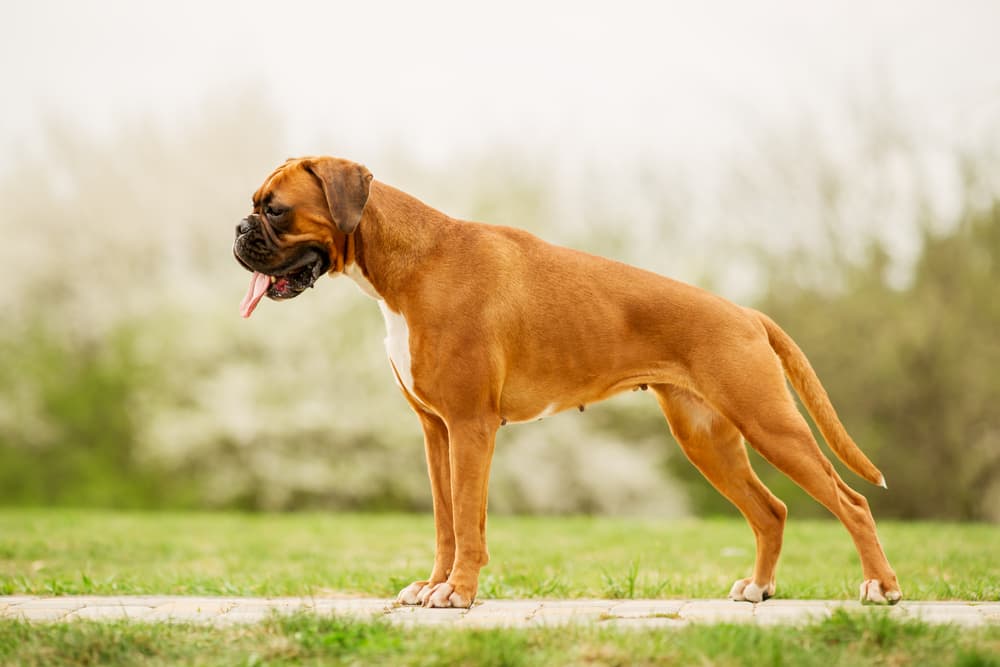Boxers are medium-sized, athletic dogs with muscles that ripple beneath a short coat that comes in brindle, black, or white. There are no miniature or giant varieties of the Boxer. They’re brachycephalic animals, meaning they have broad, short skulls and an underbite.In some cases, this can lead to difficulty breathing. One of the delightful qualities that set the Boxer apart from other breeds is the unique, almost-pleading expressiveness of their dark-brown eyes.
Enough about the Boxer’s good looks. What about their temperament? Although Boxers were historically used as fighting dogs, today they’re everything you’d expect from a family pet: loyal, affectionate, playful, courageous, and intelligent. Because they’re so patient, lively, and affectionate, they make especially great dogs for households with children. What’s more, they take their job of watching over their families quite seriously.




















